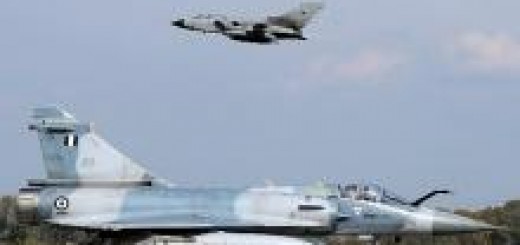Blue Angels C-130 ‘Fat Albert’ to head to UK for winter heavy maintenance
Fat Albert, probably the world’s most recognisable C-130 Hercules, is due to head to the UK for a spell of winter heavy maintenance. The iconic aircraft will return to Marshall Aerospace’s hangars at Cambridge Airport (CBG) in the UK for crucial structural work that will add decades to its lifespan.
The legendary support aircraft for the US Navy’s Blue Angels flight demonstration squadron, nicknamed ‘Fat Albert’, is scheduled to arrive in Cambridge, UK, by the end of 2026 for a centre wing box replacement, a complex engineering procedure (“akin to spinal surgery”, according to Marshalls) that can take months to complete.
As the logistical workhorse that makes the Blue Angels’ busy airshow schedule possible, Fat Albert covers over 100,000 miles (160,000km) each display season as it transports up to 45 personnel and a range of specialised equipment back and forth across the United States.
Marshall Aerospace “Fat Albert is considered the global standard-bearer for the capabilities and design philosophy of the C-130 Hercules, embodying the versatility and reliability of the most successful military airlifter in history,” said a Marshall statement.
Fat Albert, a C-130J variant, is not only a support aircraft but also performs display flights itself. Kicking off each Blue Angels show with a 15-minute demonstration of eye-catching maneuvers, including high-speed low-altitude passes, steep climbs, sharp banks, and combat landings. It is currently the only C-130 to perform regularly in demonstration flying displays worldwide.
However, the constant routine of energetic and gravity-defying displays takes a unique toll on the aircraft, resulting in elevated stress and fatigue on Fat Albert’s airframe over the years. From a lifecycle management perspective, this requires an unusual degree of expert care and maintenance planning by its operator, the US Navy. Fat Albert’s centre wing box is an example of a “lifed article” – a critical component with a finite operational lifespan in terms of total flight hours or years in service.
As the major primary structure that connects the aircraft’s outer wings to its fuselage, the centre wing box bears significant operational load and sustains exceptional stress during flight. Once it has reached its end of life, it needs to be replaced in order for the aircraft to remain airworthy. If this does not happen, the aircraft will be grounded. Marshall said that installing a new enhanced service life centre wing box from Lockheed Martin is a highly cost-effective way to extend Fat Albert’s useful lifespan by more than 20 years.
What is involved in replacing a wing box?
The process of replacing a center wing box on a C-130 is far from straightforward. The plan involves swapping out an 11-metre (36ft) section of wing primary structure for a new section, which is carried out by a team with extensive engineering capability and specialist equipment.
Marshall’s statement said that the company is “one of the world’s centre wing box experts. Since the 1970s, the company has completed nearly 80 centre wing box replacements on both legacy C-130 models and the current production model C-130J Super Hercules, extending the collective lifespans of these aircraft by at least 1,600 years. In 2024, Lockheed Martin named Marshall the world’s first authorised Centre of Excellence for C-130 centre wing box replacements.”
Marshall AerospaceIn addition to centre wing box replacement, Fat Albert will undergo routine maintenance at Marshall, including a full paint strip and repaint in the highly distinctive Blue Angels livery.
“Fat Albert’s return to Cambridge will be a moment to celebrate for the entire Marshall Aerospace team,” said Chris Dare, MRO Services and Solutions Director of Marshall Aerospace. “We are grateful to the US Navy for trusting us once more with such a valuable asset and are pleased to undertake this expert work as one of a small handful of centre wing specialists.”
Fat Albert is no stranger to the UK
As alluded to by Marshall’s Dare, this will not be the for time that Fat Albert has been to Marshall at Cambridge. Like every C-130J Super Hercules, the airframe started life on Lockheed Martin’s production line in Marietta, Georgia. After crossing the Atlantic for the first time, it arrived in Cambridge to be prepared by Marshall for entry into service with the UK’s Royal Air Force (RAF).
Between 2001 and 2017, Fat Albert flew under the tail number ZH885 for the RAF’s 24 Squadron and returned to Marshall frequently for maintenance and engineering work during this period.
Marshall AerospaceIn 2019, the US Navy acquired the aircraft from the RAF as a replacement for its previous Fat Albert, an older C-130T model. Marshall was awarded the support contract for maintenance, paint, and modifications ahead of the aircraft’s entry into service with the Blue Angels.
Fat Albert crossed the pond again upon completion of work by Marshall in 2020, relocating to the Blue Angels’ operating base in Pensacola, Florida, just a few hundred miles away from its place of manufacture.The post Blue Angels C-130 ‘Fat Albert’ to head to UK for winter heavy maintenance appeared first on AeroTime.
Fat Albert, probably the world’s most recognisable C-130 Hercules, is due to head to the UK for a…
The post Blue Angels C-130 ‘Fat Albert’ to head to UK for winter heavy maintenance appeared first on AeroTime.






